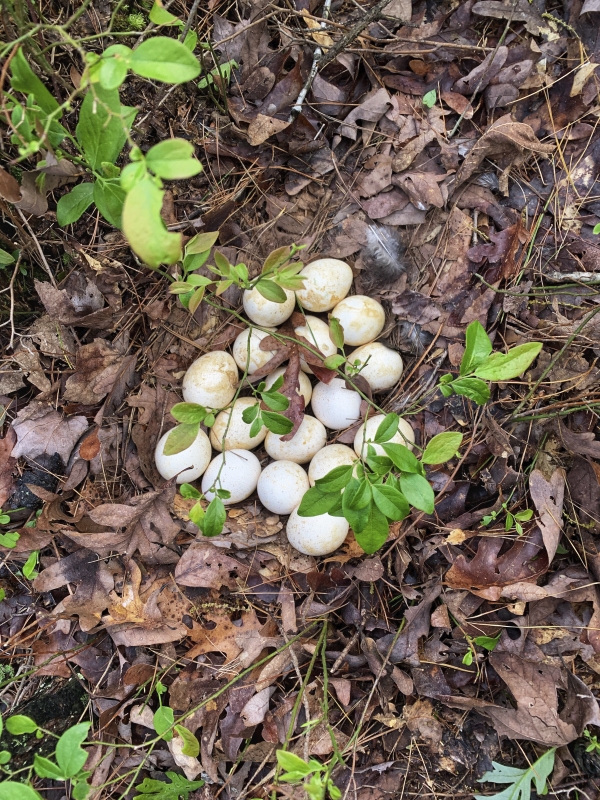While hiking in the Ouachita National Forest in Arkansas, I came across a wild turkey nest. I didn’t notice the hen until she flushed from the ground, startled by my presence. Her camouflage was so good I almost stepped on her.

Wild turkeys build their nests on the ground. The hen picks a quiet, hidden spot—usually in leaves, brush, or tall grass. She scrapes out a small depression and lines it with leaves or soft plants. Then she lays one egg a day until there are 10 to 14 eggs.
Once the clutch is complete, the hen sits on the nest almost all the time. She only leaves briefly to eat. Her main defense is to stay still and blend in. Predators like raccoons, foxes, and snakes can easily destroy a nest, so her stillness is key.
I felt bad for scaring her off, especially since it was a chilly morning. I backed away quickly, hoping she’d come back soon. Most hens return after a short time, but too many interruptions can cause them to abandon the nest. That’s something I try hard to avoid.
This was actually the second nest I found this year by accident. The first was an Eastern Whip-poor-will, and that one had some interesting defensive behavior. I wrote about it in another post.
Seeing these nests is a good reminder. Our curiosity is natural, but we need to be careful and give wildlife space—especially during nesting season. Whether you’re hiking or taking photos, staying aware helps protect these animals.
